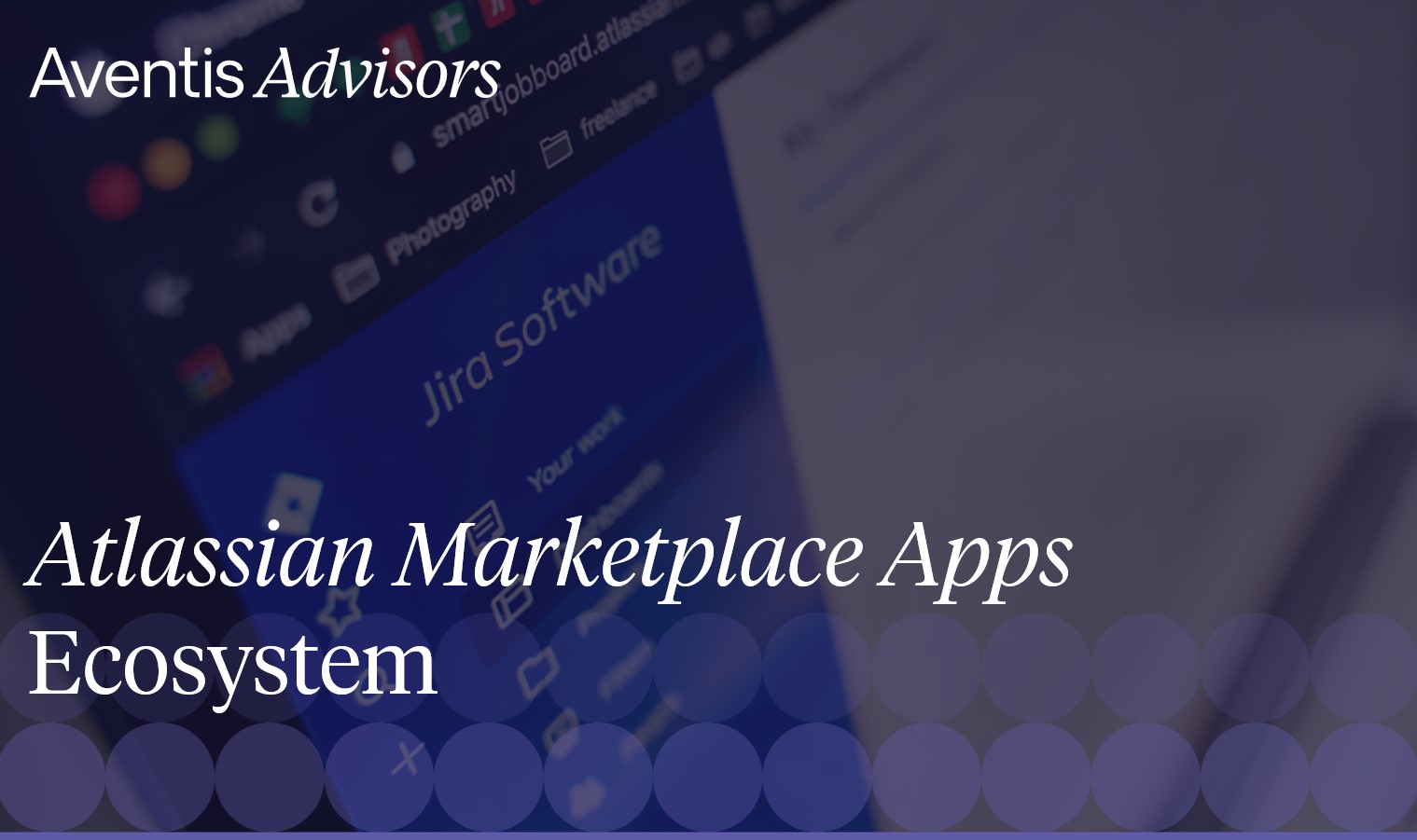On August 27, 2025, we hosted a live webinar titled “Understanding MSP Valuations & Consolidation trends”. The webinar was presented by Marcin Majewski, Managing Director and Filip Drazdou, M&A Director. They covered important topics for MSP founders and acquirers such as:
- Where MSP valuations stand today in public and private markets
- Key factors driving premiums (and discounts) in 2025
- The rise of MSP roll-up strategies with a live case study
- How to prepare your MSP for an exit in the months ahead
You can now watch the full webinar replay below. If you would like to download the presentation material used during the session, you can easily do so by clicking the download report button on the left (if you are using a computer) or by scrolling at the very end (if you’re using a phone).
Below is the full transcript of the discussion, edited slightly for clarity, flow, and briefness.
Welcome and format
Marcin: Hello everyone, and welcome to our MSP webinar. I am Marcin Majewski, founder of Aventis Advisors. Today we will explain why we focus on MSPs, how to value them, why we like the space, how best to prepare for a sale, and how to avoid mistakes when buying.
Filip: Over the past few weeks we have had many conversations about MSPs, and investor interest is strong across the United States, Europe, and other regions. This feels like the right time to discuss valuations and where the industry is heading. We have a data packed slide deck and we will move through it together. Please post questions in the chat or the Q&A box, and we will take them after the overview.
What we will cover
We begin by differentiating MSPs from adjacent models such as VARs and distributors, since many questions start there. Then we move into valuations and the factors that influence them. We will touch on roll up case studies and how acquirers generate value, and we will close the main section with practical points for sellers on preparing a business for sale.
MSPs in the broader IT services landscape
Filip: The term MSP, managed service provider, attracts a lot of attention. The more important question is how an MSP differs from other IT services models that it often sits next to. Most businesses in the wild are not pure play MSPs. They usually combine elements of resale or cloud consulting, depending on where they operate and where they can earn money.
To set the stage, consider four service types arranged roughly from lower margin and capital intensive, to higher margin and more specialized.
First, distributors act as bulk intermediaries between hardware manufacturers and end clients. These are high turnover and low margin activities with heavy assets and capex. Much of this is consolidated globally by companies like Arrow and Ingram Micro. There is not much investor interest here for the purposes of our discussion, but it is part of the value chain.
Second, value added resellers, or VARs, are one step closer to MSPs. VARs supply hardware and software as projects, help select vendors, and manage implementation. Margins are higher than distribution, but these organizations are generally sales led, with many RFP responses and large project cycles.
Third, traditional MSPs focus on services only. Think help desk, first and second line support, networking, backup, and overall care for a client’s IT infrastructure. Clients typically pay a fixed monthly fee, which creates recurring revenue with stable margins. Investors like this because the model is predictable and lends itself to roll up strategies.
Finally, cloud consultancies advise on cloud migration and implementation and often resell cloud services. On paper, these can command high margins and strong headline multiples, yet they are still project based, which means less predictability than MSP recurring contracts. For today’s session we focus on MSPs, while keeping in mind that many companies mix these activities.
Public market picture and two viewpoints
Marcin: Public multiples for VARs and especially MSPs moved up with IT spend. MSP EBITDA multiples increased by about 52 percent over the last decade.
Bear case: growth is modest, innovation is limited, and AI will automate parts of MSP work. Current valuations look fair with limited upside.
As usual, we like to frame both a bull case and a bear case. I will start with the slightly bearish view. Broad markets look frothy, and MSPs are part of that picture. The MSP business model is very good, thanks to recurring revenue, but growth is modest and innovation is not dramatic. In addition, AI introduces a risk that parts of MSP work will be automated as systems and customer interactions get smarter. In my view, today’s valuations look fair for what MSPs are, which limits further upside.
Filip: Let me lay out the bull case. Running IT in house is getting more complex. You need cloud, AI, networking, support, and cybersecurity, and most organizations cannot staff all of that internally. That dynamic favors outsourcing. MSPs aggregate specialists across these areas, which supports demand. Moreover, AI can actually help MSPs capture margin. As tasks are automated, some of that efficiency accrues to the provider. With fewer people per unit of revenue, margins can improve. So the bull case is that outsourcing continues to grow, and AI reduces cost pressure, which benefits capable MSP operators.
Private markets and the size effect
Filip: To get closer to real deal pricing, we look at private transactions. We collected approximately 80 to 100 deals where EV to EBITDA or EV to revenue was disclosed. In that sample, the median multiple is around 9 times EBITDA for a deal value of about 32 million dollars. Back solving implies EBITDA close to 3.5 million dollars, which for an MSP typically corresponds to 15 to 20 million dollars of revenue.
Marcin: Size matters a great deal. In a broader IT services sample you can see why roll ups are attractive. For example, if you buy ten MSPs at roughly 5 million revenue each, the average stand alone multiple might be around 5.9 times. If you integrate them well into a 50 million revenue platform, the combined company can trade at higher multiples. That multiple expansion can roughly double equity value before any operational improvements, although of course integration is hard and real life is never this simple. Still, this explains the intensity of roll up activity in MSPs.
What drives MSP valuations
If we list the main drivers as buyers actually consider them, the first is revenue size. Below roughly 3 million revenue, which often equates to less than half a million of EBITDA, the buyer pool is thin and multiples are low. At 10 million revenue and above, where margins are often around 20 percent, and especially at 20 million and above, best in class companies can achieve 8 to 10 times EBITDA.
The second is growth. If revenue is declining, it is usually better to wait, stabilize, and return to growth before going to market. The third is recurring revenue mix. If less than half of revenue is recurring, many MSP roll up buyers will not bid, and the business starts to look more like a VAR or project shop.
Customer concentration is another key point. If more than 30 percent of revenue comes from one client, the risk is high, even though MSPs often target SMBs and naturally diversify. Finally, churn is a simple but powerful metric. Anything above about 10 percent raises concerns, because the core attraction of MSPs is long term clients on recurring contracts.
As a rule of thumb emerging from our data and market feedback, smaller MSPs often transact around 4 to 6 times EBITDA, midsize around 6 to 8 times, and larger or best in class around 8 to 10 times.
Buyer and seller dynamics
Filip: At the moment there are more buyers than sellers. Many private equity backed roll ups have been launched, and new platforms continue to appear. The thesis started in the United States, gained momentum in the United Kingdom, and is now spreading through continental Europe. Because there are fewer larger targets, roll ups are moving down market into smaller EBITDA bands. If you are seeing an increase in inbound interest, this may be a good time to consider a sale.
Marcin: Consolidation waves tend to last for five to ten years and then taper off. If you miss the window, liquidity can dry up and attention can shift to the next consolidation theme. Experienced buyers, particularly those who have already executed acquisitions, can add real value. They bring playbooks, benchmarks, KPIs, and the capital to invest. If you want to stay in the business after a transaction, that can be an attractive journey.
Too many roll-ups, or just enough
Marcin: There are certainly many roll ups forming right now. Not all will generate stellar returns. Some are jumping in because others are, without the experience required to execute. Many will not even make a first investment if they cannot find targets. However, those who do have experience, including people who have worked at serial acquirers like Constellation Software and who reapply similar principles to MSPs, can do very well. The MSP model shares important characteristics with software companies, especially the recurring revenue element.
Filip: The sourcing lesson from those groups also carries over. Finding MSPs requires a wide net and patience. Keeping in touch and waiting for the right timing is part of the playbook.
Case example and timing
Marcin: Consider one listed Italian consolidator to illustrate cyclicality and how public markets influence private deals. Early acquisitions were at about 4.7 times and 4.5 times EBITDA. During COVID they paid closer to 8 times, then paused for a period, and later resumed buying at around 6.8 times. Timing the market matters. Public companies often trade at higher multiples than private targets, so by buying privately at lower prices they create value. In extreme periods, such as COVID, the gap can be two turns of EBITDA or more.
Preparing for a premium outcome
Filip: Preparation is a major lever for valuation. On the financial side, have clean historicals and a clear 12-month forecast because valuation is ultimately a financial calculation. Normalize founder compensation and personal expenses to market standards. If you have not raised prices in several years and you believe retention risk is manageable, consider doing it before a process to lift margins.
On organization, reduce founder dependency. If your goal is to retire or step back within one to three years, begin succession early. Hand over key client relationships and responsibilities and, where feasible, step back formally before a sale. It is easier for a buyer to believe the company can run without the founder when it already does.
On process, craft a focused equity story. Perhaps you serve particular verticals, have very low customer concentration with long tenures, or you are especially strong in an area like security. Build relationships with buyers before you sell. They have seen many MSPs and their questions signal what matters. Finally, an advisor can structure a competitive process, synchronize information, and help you compare price and terms in a disciplined way.
Key takeaways
Marcin: MSPs remain attractive because of recurring revenue and defensibility. Do not inflate revenue with low margin resale that weakens the MSP profile.
Filip: Scale helps, fundamentals matter more. Keep growing, consider bolt on deals, protect recurring mix, and be ready with data.
Q&A
Q1: Do you see a correlation between large revenue size and low customer concentration?
Marcin: Yes. As MSPs reach roughly 50 to 100 people and beyond, the likelihood of high concentration falls. It is hard for one client to remain dominant as delivery capacity and the client base expand. We are not familiar with large MSPs that sustain high concentration for long.
Filip: Agreed.
Q2: How should companies with multi-year agreements handle raising prices, and when is a good moment to do it without pushback or churn?
Marcin: Act sooner rather than later and use a structured, data driven approach. Where possible, include escalation clauses or annual reviews in new contracts. Analyze profitability by client, ticket volume, and service mix, then pilot increases with segments that are less sensitive. Communicate value clearly and, when appropriate, pair increases with service improvements or specific SLAs. Pricing specialists from SaaS can help adapt methods to MSPs.
Filip: A practical way to start is with small tests on select cohorts and expand once you see results.
Q3: How does the headquarters location impact valuation multiples, and which geographies tend to be higher?
Marcin: We do not have a single dataset that quantifies the exact premium by country, but patterns are clear. Multiples are higher where buyer competition is intense. The United States, the United Kingdom, and the Nordics tend to price higher. Western Europe is catching up, and Eastern Europe is emerging. Some Asian markets, for example Japan, have relatively inexpensive public valuations, which can create cross border arbitrage opportunities.
Filip: Buyer density and platform activity are the biggest drivers of those gaps.
Q4: How do you calculate churn for an IT services company: by number of clients or by revenue?
Filip: Track both, prioritize revenue churn. Logo churn is the percentage of customers lost in 12 months. Revenue churn is the revenue lost from last year’s customer cohort and maps better to value risk, since losing a few small logos is not the same as losing a large account.
Q5: Will consolidation create regional champions in Europe, or will the market remain fragmented?
Marcin: Both dynamics are likely. First, national roll ups of smaller companies. Over time, combinations of country champions will form regional platforms. There are meaningful synergies in centralized operations such as security operations centers, back office location strategy, stronger vendor purchasing, and cross border enterprise delivery.
Filip: We are already seeing multi country strategies take shape in several markets.
Why you need an MSP M&A advisor
Understanding current MSP valuations provides insight into market trends and helps you time your exit strategy. Each MSP is unique, just like every founder’s journey. This is why it is important to seek advice from experts in the M&A landscape, particularly advisors with experience in the MSP sector who understand your situation.
M&A advisors navigate market dynamics and valuations and coordinate all essential workstreams. While you focus on running your business, they ensure no detail is missed and advocate for the best possible deal. Their success is tied to yours, and their impact on the final sale price can be significant.
About Aventis Advisors
Aventis Advisors is an M&A advisor focusing on technology and growth companies, including MSPs. We believe the world is better off with fewer but higher-quality M&A deals completed at the right moment for a company and its owners. Our goal is to provide honest, insight-driven advice, clearly laying out all options for our clients, including keeping the status quo.
Contact us to discuss how much your MSP could be worth and how the process works.




